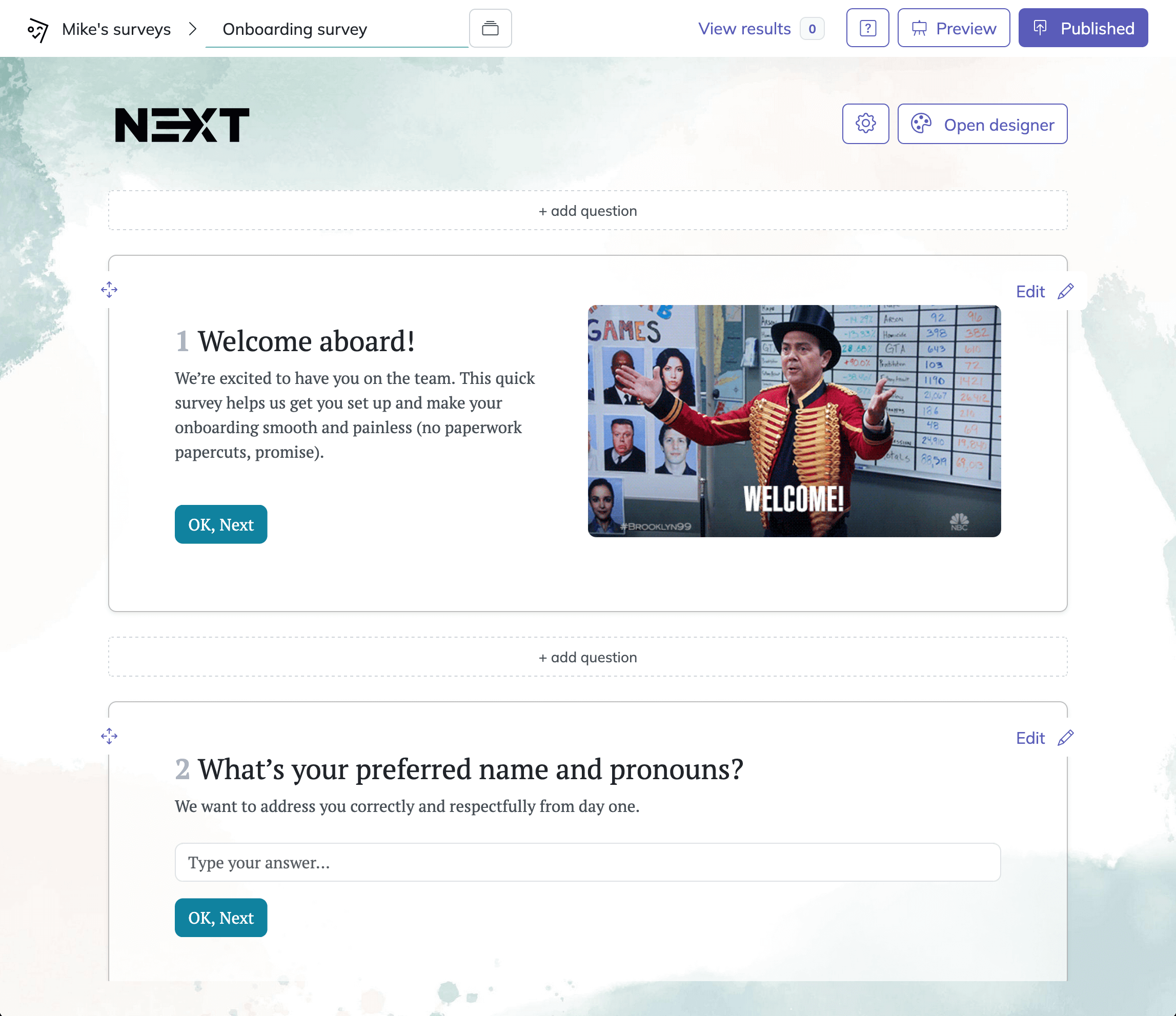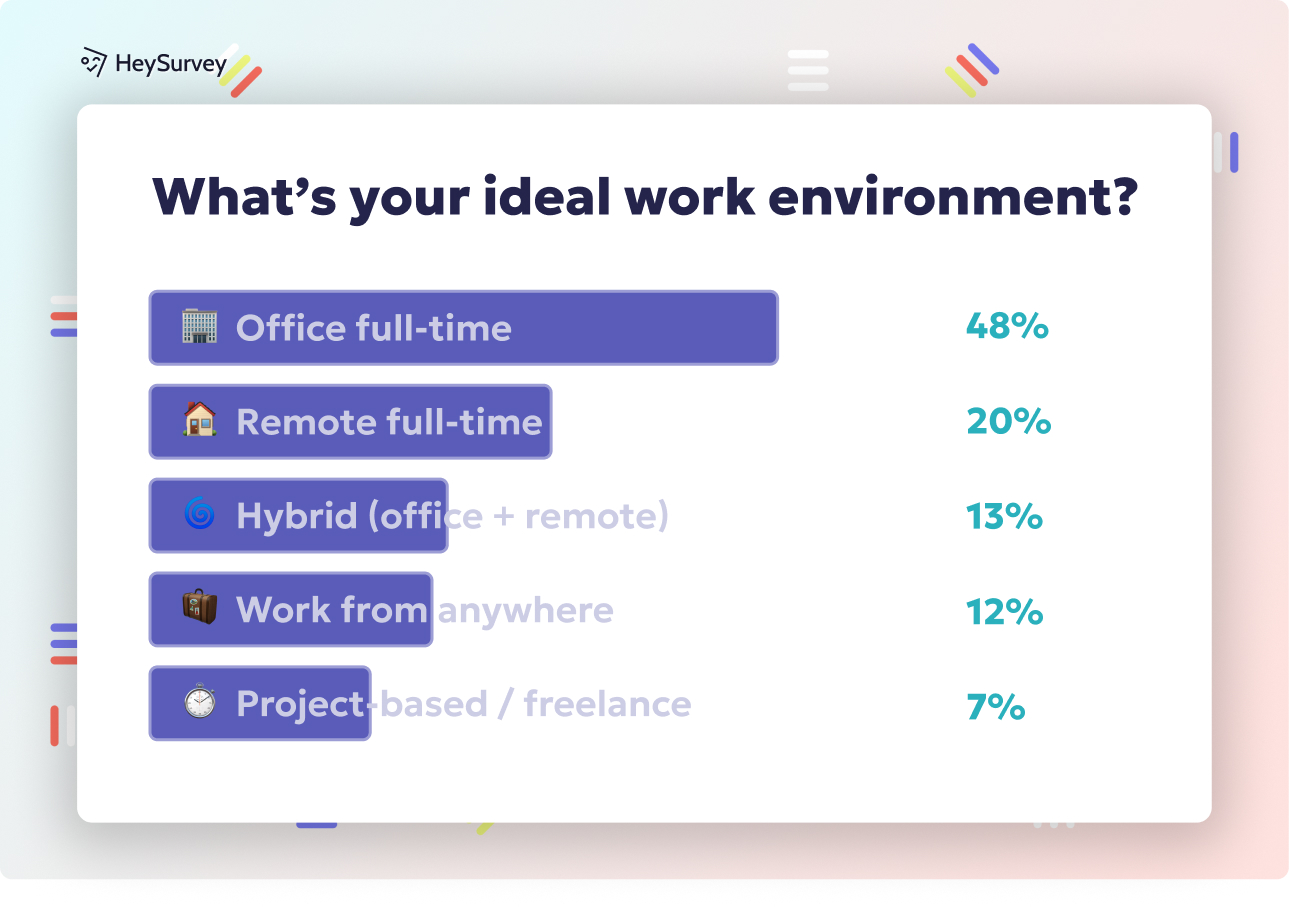32 Crime Survey Questions: Types, Uses & Proven Examples
Explore 40 expertly crafted crime survey questions with sample sets to measure crime rates, public safety data, and community trust effectively.
Crime surveys are powerful tools that help us measure crime rates, shape better laws, and bolster public trust. Whether you’re after “public safety data,” looking for real “law-enforcement feedback,” or aiming to uncover the truth about hidden crime, the way you frame your crime survey questions really matters! In this article, we explore eight essential types of surveys—from victimization surveys to cutting-edge cybercrime questionnaires—plus expert tips to craft questions that truly make a difference.
Victimization Surveys
Why & When to Use
Victimization surveys leap where police records cannot. They spotlight unreported crimes and give a voice to those who never call the cops. This technique is a secret weapon for government agencies, NGOs, and campus security teams. Even journalists love these surveys when investigating crime that stays tucked away from official stats.
These surveys aren’t just about ticking boxes. They track trends year after year, offering a crystal-clear picture of how crime changes over time. Sometimes, they uncover patterns of victimization among people or places often overlooked. That means those in charge of victim services, policy changes, and funding decisions finally get hard data to work with. Knowing the real story helps everyone, from neighborhood watch groups to Congress, make smarter choices that help more people.
Victimization surveys are also a goldmine for: - Evaluating the reach of support services and public safety programs. - Pinpointing what keeps people from reporting victimization. - Tracking changes after new laws or crime prevention initiatives.
If you want to know what’s really going on, a good crime victim survey cuts through the noise. It’s a powerful companion to police records, shining light on the dark corners.
Five Sample Questions
In the past 12 months, have you personally experienced any theft or burglary? If yes, please specify.
Did you report the incident to the police? Why or why not?
What type of support services, if any, did you access after the crime?
How satisfied were you with the response time of law enforcement?
On a scale of 1–10, how safe do you feel in your neighborhood after the incident?
Victimization surveys open the door to frank self-report victimization answers that change the way crime prevention is done.
Victimization surveys reveal that a significant portion of crimes go unreported to the police, highlighting the importance of these surveys in capturing the true scope of criminal activity. (bjs.ojp.gov)

How to Create Your Crime Survey with HeySurvey in 3 Easy Steps
Ready to build your very own crime survey but new to HeySurvey? No worries! Follow these simple steps to get your survey up and running fast. When you’re done, just click the button below to open a handy template and start customizing right away.
Step 1: Create a New Survey
- Head to HeySurvey and choose how you want to start: pick a pre-built template tailored for crime-related questions, or opt for an empty sheet if you prefer starting from scratch.
- Enter a clear survey name, such as “Community Crime Experience Survey” to keep things organized.
- Once created, you’ll land in the Survey Editor, your control center for adding and tweaking questions.
Step 2: Add Your Crime Survey Questions
- Click the Add Question button on the top or between existing questions.
- Choose the question type: from simple multiple choice to scales or open text responses—perfect for your victimization, perception of safety, or cybercrime questions.
- Type in your questions, add helpful descriptions or instructions if needed, and mark questions required when an answer is mandatory.
- Use HeySurvey’s options to add images or format text for extra clarity and engagement.
Step 3: Publish and Share Your Survey
- Once your questions look good and the flow feels right, hit the Preview button to test it yourself or with a colleague.
- If all is well, select Publish to generate a live survey URL. You’ll need to create a free HeySurvey account if you haven’t already, so you can collect and manage responses.
- Share the link via email, social media, or embed it on your website.
Bonus Tips to Make Your Survey Shine
- Apply Branding: Upload your organization’s logo and customize colors and fonts from the Designer Sidebar for a professional look that boosts trust.
- Define Settings: Set your survey’s start/end dates, response limits, or redirect URLs to better control when and how participants engage.
- Use Branching: Tailor user experience by directing respondents to specific questions or endings based on their answers—great for keeping surveys relevant and concise.
And voilà! You’re ready to gather powerful insights that inform smarter crime prevention and community safety measures with HeySurvey’s easy-to-use platform. Don’t forget to try the template below to jump-start your project!
Perception of Safety (Fear of Crime) Surveys
Why & When to Use
Fear of crime surveys provide insight into the emotions driving public safety decisions. Sometimes, there’s a Grand Canyon–sized gap between actual crime statistics and what residents feel every day. Understanding these perceptions is vital for policymakers who want to boost public safety and well-being.
These surveys shine brightest before organizations launch community policing or neighborhood watch programs. By measuring how neighbors feel—rather than simply counting incidents—law enforcement and public officials get a sense of what really worries people. If you want to pre-empt unnecessary panic or create confidence-boosting campaigns, start here.
Some top use-cases include: - Uncovering specific worries tied to vulnerable groups (elderly, youth, recent immigrants). - Measuring the effects of recent crime waves or high-profile incidents. - Identifying places or times residents feel most unsafe.
If you want buy-in for safety initiatives, nothing beats showing you’ve listened to the fears that keep people up at night.
Five Sample Questions
How safe do you feel walking alone in your area after dark?
Which crimes do you worry about most?
Has your fear of crime changed in the last year?
What preventive measures have you personally adopted?
Rate your confidence in local police to protect you from crime.
Community safety perception is about more than streetlights and patrol cars. It’s about trust built on honest answers.
In 2023, 40% of Americans reported feeling unsafe walking alone at night near their homes, the highest level in three decades. (news.gallup.com)
Community Trust in Law Enforcement Surveys
Why & When to Use
Trust is the backbone of effective policing. When a town’s relationship with its officers crumbles, public safety efforts can lose their impact overnight. That’s why community trust surveys are non-negotiable, especially after controversial police encounters or big reform pushes.
Leaders need to measure perceptions of fairness, transparency, and respect from local law enforcement. Residents’ willingness to cooperate—or not—hinges on their interactions and the stories swirling around their neighborhoods. After all, even a single incident of perceived injustice can echo for years.
These surveys should be used: - Following high-profile police incidents. - To gauge whether reform plans are hitting the mark. - When launching community-focused policing projects.
A well-crafted police trust survey results in priceless feedback to direct policy, training, and communication.
Five Sample Questions
How would you rate the fairness of police in your community?
Do you believe police treat all groups equally?
How comfortable are you contacting police when you need help?
Have you witnessed excessive use of force in the past 12 months?
What improvements would increase your trust in law enforcement?
Law enforcement accountability questions show you’re serious about equity and community healing.
Crime Reporting Behavior Surveys
Why & When to Use
Not every crime makes it into the ledger. Many people keep silent due to barriers to crime reporting such as fear, mistrust, or confusion about procedures. That’s why crime reporting behavior surveys are so important for hotlines, university campuses, and grassroots groups.
Understanding these behaviors can be the first step in: - Improving outreach and information campaigns. - Removing bottlenecks and intimidating steps in reporting processes. - Training staff to recognize and assist reluctant reporters.
Sometimes, people avoid reporting because they don’t even know anonymity may be possible. Unpacking these factors may reveal unexpected gaps in public awareness that you can address with a few tweaks to reporting systems.
Five Sample Questions
If you experienced a crime, how likely are you to report it?
What factors would discourage you from reporting?
Do you know how to file an anonymous report?
Rate the clarity of your local reporting procedures.
Have you ever used an online portal to report crime?
Understanding under-reporting is essential for closing the case on hidden crimes. Every under-reporting survey brings new perspectives to light.
A 2007 study found that only 2% of drug- or alcohol-incapacitated sexual assault victims and 13% of physically forced victims reported the crimes to law enforcement. (time.com)
Youth Crime & Delinquency Surveys
Why & When to Use
Young people walk a different path than adults when it comes to crime. Schools, juvenile justice agencies, and nonprofits rely on juvenile delinquency surveys to spot early warning signs, steer youth away from trouble, and design after-school programs that work.
The right youth crime questionnaire can: - Reveal triggers for risky behaviors, like bullying or peer pressure. - Help schools intervene before small problems become criminal charges. - Show where family or school resources might be falling short.
If you want to break the cycle, you need to know what’s behind the choices kids make. These insights help to reduce suspensions, dropouts, and—when properly used—future crime rates, too.
Five Sample Questions
Have you skipped school without permission in the last 6 months?
How often do you feel peer pressure to engage in illegal activities?
Do you have access to after-school programs that keep you engaged?
Have you ever carried a weapon for self-defense?
Rate your relationship with school resource officers.
When you understand the world as kids see it, clever interventions become possible. Youth crime questionnaires shine a light on prevention.
Workplace Crime & Harassment Surveys
Why & When to Use
Work isn’t just about deadlines and coffee breaks—it’s also a frontline for occupational crime survey efforts. Internal theft, harassment, and fraud often lurk under the surface. Catching these issues early is essential for corporate compliance, workplace safety, and employee morale.
A well-structured employee safety questionnaire can: - Identify risks before they grow into lawsuits or media scandals. - Gauge whether reporting channels are trusted and accessible. - Spark upgrades to security, anti-harassment training, or staff support.
If your people don’t believe action will happen, crime thrives in the shadows. These surveys ensure management can’t claim ignorance when the truth comes out.
Five Sample Questions
Have you observed or experienced workplace theft in the past year?
How frequently have you faced verbal harassment at work?
Do you know the company’s procedure for reporting misconduct?
How confident are you that management will act on a report?
What security measures would make you feel safer at work?
No company can afford to ignore internal crime. Employee safety questionnaires put workplace well-being front and center.
Cybercrime Experience Surveys
Why & When to Use
Let’s face it—cybercrime is everyone’s problem these days! Phishing scams, ransomware, and identity theft don’t respect borders, making cybercrime survey questions critical for businesses, governments, and individuals alike. These surveys not only support prevention efforts but also drive the design of better awareness campaigns.
An online safety questionnaire can help with: - Mapping out weak spots in cybersecurity habits. - Tracking the spread and impact of online scams or breaches. - Informing citizens about the latest cyber threats and protective steps.
By understanding who gets hit and how, authorities and IT teams can stay one step ahead of hackers.
Five Sample Questions
Have you been a victim of online fraud in the last 12 months?
Did the incident involve stolen personal information?
What security tools do you use (e.g., MFA, antivirus)?
How long did it take to resolve the cyber incident?
Rate your confidence in authorities handling cybercrime cases.
A cybercrime experience survey is your best firewall against digital trouble.
Best Practices: Dos and Don’ts for Crafting Crime Survey Questions
Creating an effective crime survey isn’t rocket science—but it does take a bit of finesse! To get accurate, actionable feedback you need to follow these dos and steer clear of some not-so-obvious don’ts.
Dos: - Keep your language neutral, like a good referee. - Assure respondents their answers are confidential. - Use behaviorally specific wording instead of vague labels. - Pilot test your survey with a sample group for clarity. - Offer multiple response formats to suit different minds.
Don’ts: - Avoid emotionally charged language (no calling something “brutal” or “heinous”). - Never overload your survey with jargon or technical terms. - Ditch double-barreled questions—stick to one topic at a time. - Don’t forget skip logic so people aren’t forced to answer irrelevant items.
Other tips include: - Make your survey mobile-friendly, so people can answer from anywhere. - Mind the timing—shorter surveys at the right moment get more honest responses. - Use incentives carefully to boost response rates, but keep it ethical. - Prioritize data privacy studiously, especially for laws like GDPR and CCPA.
Smart survey design isn’t just about science; it’s about empathy and practicality.
Crime survey questions are the backbone of policies that actually work, helping you measure crime rates, fine-tune public safety data, and elevate law-enforcement feedback. Thoughtful surveys transform hidden truths into clear action plans. For a ready-to-use crime questionnaire sample or expert help with your survey, download our free template or reach out to our survey design team today!
Related Safety Survey Surveys

31 Health and Safety Survey Questions: Types & Best Practices
Explore 35 expert health and safety survey questions across 7 types to boost workplace safety, em...

32 Safety Survey Questions: Types, When & How to Use Them
Discover 30 expert safety survey questions across various types to boost workplace safety, cultur...

